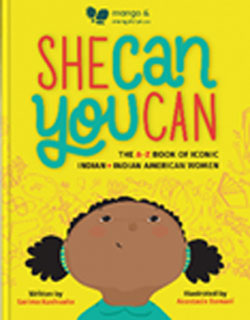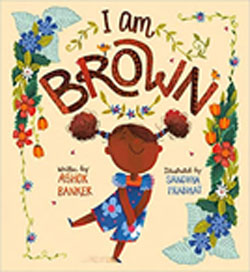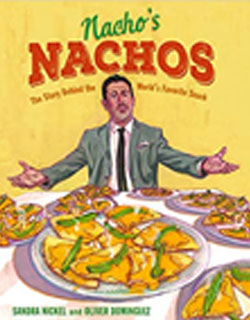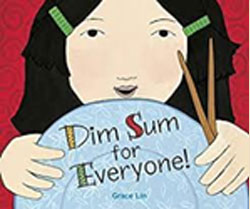
Children’s Literature Review Source has been reviewing children’s and young adult literature since 1993. Our mission is to review a wide variety of children’s and young adult titles from a wide variety of voices. We do so with several goals in mind. One, that every child and teen find themselves represented in literature. Two, that they learn about and respect others that are different from themselves. Three, that they are exposed to enjoyable fiction and nonfiction to help educate, provide understanding, and inspire. Thus, we currently accept books for review from small, medium, and large publishing houses. We also provide a unique opportunity for indie authors to showcase their work.
Whether you are an aspiring author, seasoned librarian, or new parent, our new ChildrensLit Now newsletter will bring you book reviews, literary information, and interviews to present a unique insight into current trends within children’s and YA literature.
Shelley Oakley
Director, Children’s Literature
Subscribe to ChildrensLit Now Newsletter

She Can You Can will be a keeper on bookshelves for many years to come. Kushwaha has provided a diverse selection of accomplished Indian women to create a book worthwhile of any library collection. In ABC first name order, readers are given short biographies of great Indian women who conquered sexism and other obstacles to achieve great things.
Women highlighted include athletes, doctors, businesswomen, scientists, government officials, artists, and more. But spotlighting women in unique professions makes this title stand out and provides even more inspiration for readers. Women like Deepa Malik, whose paralysis did not stop her from winning awards and medals in various sports that no one thought she could. And Uma Devi Khatri, whose poverty and size only pushed her to break stereotypes. In language geared towards middle-grade readers, Kushwaha points out each woman’s expertise, barriers, and ultimate problem-solving methods to gain success. Each woman’s feature includes a quote by either herself or someone who has worked with her, awards received, birthplace and birth/death dates, and an illustration of the woman. The unique activities at the end of the book reinforce finding a positive female role-model and how one is never too young to start dreaming big. Older female readers, who will also be inspired by this title, will identify with the struggles many of the women faced, such as proving themselves in a male-dominated society. Younger readers, especially girls and more specifically Indian girls, will gain self-confidence in their own aspirations. Recommended for libraries that want to truly create a diverse collection and honor all societies.

Banker and Prabhat have created an exuberant celebration of brownness in a child-sized picture book context. The presentation of the text is simple; it is a list poem that begins with the titular declaration of brown identity. Through the book, we see a little brown girl with unforgettable flying pigtails, as well as a rich array of brown kid figures, demonstrating love and friendship, occupations, national origins, languages, facial hair or the lack of it, eye color, homes, interests, food preferences, and clothes. Two-thirds of the way through the book, we find a spread with examples of relationships that commonly exist in communities—a friend and partner, a teacher, a driver, a guru, and more. Then we return to two final ways in which difference can be celebrated: religion and accomplishments. For the former, the author shows a variety of places of worship; the latter includes drawing a picture, building a building, and running a company (and a race). In the bottom right corner of the penultimate spread, we turn the page to reveal a triumphant set of words: “I wrote this book.” The final spread speaks directly to the reader, stating: “I am YOU.” The palette, brown-red-orange with vivid blue and green contrasts, infuses the whimsical art with warmth. This would be a good companion book to All the World by Liz Garton Scanlan.

When Mamie Finan brought her friends to the Victory Club in Piedras Negras, Mexico, and asked her favorite waiter for a new snack, she likely had no idea that she was instigating the creation of one of the most popular modern snacks. Inspired by his childhood memories of snacking on quesadillas in his foster mother’s kitchen, Ignacio “Nacho” Anaya responded to Mamie’s request by sprinkling cheese on fried corn tortillas, adding some pickled jalapeños, and popping the whole thing into the oven. Word quickly spread about Nacho’s Special, and a tasty snack was born. Nickel’s story of the origin of this popular snack—now found everywhere from sporting events to fine restaurants—may lead readers to wonder how other favorite foods came to be. Dominguez’s acrylic, gouache, ink, and colored pencil illustrations depict 1940’s Mexican culture with warm, vibrant colors. An afterword, author’s note, and original recipe add richness to the story, and source notes are provided to demonstrate the author’s use of primary sources. This would make a good read-aloud during elementary classroom units about Mexico or food heritage. It would also be a good selection for older students who want to know more about this snack, or who have culinary aspirations.

Prince Donald has lost his smile. Once a cheerful young boy, he now sits, sad and despondent, staring out at the verdant fields surrounding his castle. Everyone in the kingdom tries to make Prince Donald’s smile return—with delicious cakes and fun games and more—but none of these are sufficient to improve the Prince’s mood. The court magician even goes so far as inventing a new animal to lift the Prince’s spirits; unfortunately, the final product is not as friendly as the magician expects. It is not until the magician’s granddaughter, Hana, creates a new creature—one she first viewed in her dreams—that the Prince has any chance of finding happiness again. Together, the Prince and Hana search for the elusive unicorn and work together to protect it from harm. A beautiful and elegant presentation immediately draws readers into this traditional Scottish story. Sturdy, hardcover backing coupled with richly detailed cover art make this book stand out among fantasy books. Middle length text blends with expressive and fantastic illustrations to recount the tale of Prince Donald and how the unicorn came to Scotland. Expert storytelling combines narrative and dialogue to share this traditional tale with a new generation of readers. At the end of the story, the author includes a brief explanation of the unicorn’s Scottish emblem as well as her inspiration and approach to this story. Readers of all ages with an affection for myths and legends will relish the overall appearance of this book, from the rich and expressive illustrations to the thick paper on which it printed. This is a high-class addition to any library for elementary school-aged readers.

At the very top of a mountain live Little Anxious Creatures (LACs) and the Calmsters, who helped them understand the causes of their fear. Among these little beings are two friends, a LAC named Loppy and a Calmster named Curly. One day, Loppy feels anxious about an upcoming test. He is worried about failing the test, embarrassing himself, or otherwise messing up. In order to calm himself, Loppy goes to the park in the center of town. An old tree at its center is a source of calming warmth for Loopy; sitting among its gnarled roots, he can feel the anxiety leave his body. After a bit, Curly arrives. Picking up a fallen leaf, Curly notes that the old tree is dropping its leaves way too early in the season, and its bark is flaking away. Taking a closer look at the tree, the friends realize it is in very bad health. Curly notes that every living creature has a lifespan that ends. The old tree’s long life is coming to an end and, sad though its departure will be, it has lived a wondrous and rich life. Time passes. Loppy and Curly are once again playing in the park. In the spot where the old tree once stood, there is now a bench with a picture on its backrest of the once-grand tree that stood there for so many years. Children now play where they once sat in wonder at the tree’s spreading branches. The circle of life continues, but memories of the now-absent tree still sustain Loppy, Curly, and all the other little creatures who once prospered in its presence. Tree’s lovely story is part of series about Floppy and Curly, all aimed at helping children better understand and cope with their emotions. This gentle story can help children cope with losses of loved ones—family, friends, pets—in their own lives. This book is a gift to readers of all ages, for whom a story built on compassion, empathy, and powerful storytelling will offer a sense of reassurance.
In 2020, Children’s Literature Review Source added several publishers to our list of reviews. One of these publishers was Mango & Marigold Press, an award-winning publishing house that specializes in the South Asian experience.
We were delighted when Mango & Marigold Press founder Sailaja Joshi said yes to our interview invitation. Sailaja shared with us what makes Mango & Marigold Press stand out among other publishers and how it promotes diversity to help children understand each other and feel valued.

Tell us about Mango & Marigold’s place in the world of children’s publishing.
Sailaja: It all started six years ago when I was pregnant with my first child. I have always adored books, and so I was planning a library-themed baby shower, of course! I envisioned filling her bookshelf with beautiful books that celebrated our shared Indian culture and heritage. In this moment, I found the diversity gap that exists within children’s literature. The books I did find were inappropriate for a child, or even worse, culturally insensitive. I could not imagine raising my daughter in a world where she would not see herself as the hero on the cover of a book, so I took matters into my own hands and started a publishing company for diverse children’s literature.
Kids are born open-minded. They aren’t born with the idea that there is only one way to do things; that there is only one kind of beauty or belief. With our books, we want to open up the world to our readers, encourage wonder and awe in diversity, and show children that diversity is the nature of humanity, not an initiative. Through diversity, we increase education, love, kindness, and understanding.
I love seeing the difference our work has made. As I read our books that celebrate and share India’s culture and heritage with my children, I am so grateful that they will grow up in a world where they can see themselves on the cover. Our books empower families and teachers to talk about diversity from an early age in beautiful, impactful, and meaningful ways. One of our early readers was just two and a half when he started asking his mother questions about diversity! It is these conversations that will change this next generation of children into culturally literate citizens. And now, we’ve expanded our reach to include young adult books with the release of Untold: Defining Moments of the Uprooted , a collection of real stories that explores the South Asian experience in the U.S., U.K., and Canada through the lens of identity, being, and relationships.
How many books does Mango & Marigold acquire each year, and what is the process?
Sailaja: It can really depend on the year but on average it's around 5-7. That process is fairly straightforward and looks akin to what most other publishers do. First, you submit your manuscript per our requests, then our team (board members and senior editor) read through. If there is a consensus, then we bring you in for a conversation. From there, it usually takes about 3-4 months to get a contract out to you. Then, well, the process starts!
Why did you change your press's name from ‘Bharat Babies’ to ‘Mango & Marigold’? Sailaja: Bharat Babies started as a small, mission-driven boutique publishing house and turned into a movement. With award-winning books across multiple categories, features in national media and international tv, we've helped to showcase the importance of diversity in children's literature and make a stand for representation.
When we started, our vision was to share the stories of our home, our heritage, of India. It's why we selected our name Bharat Babies, to reflect the home of our families and the community we were trying to reach. But over the past few years, we've quickly realized just how much more work needs to be done. We've realized that the stories of the entire South Asian experience need to be told. Stories that go beyond the borders of India. Stories that go beyond childhood.
After nearly two years of reflection and conversations, our team decided to make a change to our name. A change that will reflect our broader mission and vision behind our brand. A change that reflects our path forward. So, in January 2020, Bharat Babies transitioned to the name Mango and Marigold Press, an award-winning independent publishing house that shares the sweet and savory stories of the South Asian experience. With a new look, a new tagline, our vision is to continue to share the stories of the South Asian experience, expanding beyond children's literature to the likes of middle grade, young adult, and more. In addition, we expand our borders beyond those of India to include countries like Afghanistan, Pakistan, Bangladesh, Sri Lanka, Nepal, Bhutan, the Maldives, and more.
You have a unique campaign to get more multicultural books for children out to the public. Can you tell us a little more about this campaign?
Sailaja: #1001DiverseBooks is a campaign we started one year ago to increase access to literature for underserved communities. Through this initiative, we are committed to raising funds for 1001 diverse books to be given to nonprofit and literacy advocacy groups across the country for all new releases. For every preorder, customers will have an option to sponsor a copy of the book for just $10. This sponsored copy will be given to one of the company’s partners and distributed to the children who most need the books. It is so exciting to be able to say YES to organizations like the City of Cambridge, Behind the Book, Book Smiles, and IRIS Refugee Families and give beautiful new diverse books away to children in need.
So why are we so passionate about not only closing the diversity gap but also the accessibility gap? In low-income neighborhoods, the ratio of books to children is one book for every 300 children, far below the ratio of 13 books per child in middle- and upper-income neighborhoods (Handbook of Early Literacy Research 2006). This is what we are combatting, and I am determined to change this.
So you may be asking, why are children’s books so important? Eric Velasquez captures this perfectly by saying, “Once children see themselves represented in books, their existence is validated, and they feel that they are part of the world.”
What are the struggles of independent publishing houses in 2021?
Sailaja: One of our biggest challenges, simply put, is financing. As a publishing house, in a very traditional space that is dominated by five big publishing houses, there is little space (and investment) for houses like ours. Our team works hard, investing each dollar we earn back into our company to help ensure more diverse books come into the market. Our executive team, myself included, work full-time jobs in addition to our roles at Mango & Marigold Press. The publishing world is expensive and gives very little returns for investors. We struggle to challenge the largest publishing houses for space on bookshelves, an acknowledgment in publications, awards… everything.
What hopes do you have for the future of children’s publishing?
Sailaja: That smaller indie publisher will get more space with gatekeepers like Publishers Weekly. In addition, I look forward to expanding and adding to a space that is in dire need of more representation.
For more information about Mango & Marigold Press, visit their website https://mangoandmarigoldpress.com/.
The Phoenix Award and Phoenix Picture Book Award
This past Monday, ALA announced the winners of some of the most distinguished, well-known children’s and young adult literature book awards. As in the past, several standout books won multiple awards. But what about those books that were exquisitely written yet not prized? Many excellent books may not get the same amount of promotion, reviews, word-of-mouth, etc., and sometimes go unnoticed.
It is for these reasons that the Children’s Literature Association’s Phoenix Award Phoenix Award and Phoenix Picture Book Award Phoenix Picture Book Award are truly unique. These awards seem to tell authors, "Hey, we're still reading your book years later and want people to know about it." That's promising for great authors that often get overlooked.
The Phoenix Award and Phoenix Picture Book Award are given to a book written twenty years before the annual conference at which it is to be awarded. For example, the 2021 award will be given to a book published in 2001. To qualify for the awards, a book must not have won a major award. This means that a book that has since grown in reception and impacted literature can now receive an award.
Dr. Gabrielle Atwood Halko, committee chair of the Phoenix Award, and Dr. Ramona Caponegro, committee chair of the Phoenix Picture Book Award, provide additional insight into the awards.
How many books are submitted each year as nominations?
Gabrielle: That depends on the year; however, our task is to locate as many books published in that year as we can and read as widely as possible.
We're still at the brink of widespread e-reader use in our current Phoenix work (right now the Phoenix Committee is looking at all books published in 2003, for instance), and there are sometimes issues with accessing those texts in either hard or e-copies. That said, in the years I've served, we've read 300+ books each year.
Ramona: For the Phoenix Picture Book Award, I usually read 350-400 picture books each year. Our committee works a year behind the Phoenix Award, so we're currently reading books first published in 2002 to select the 2022 award recipient and possibly honor book(s).
How are the award committee members chosen?
Gabrielle: Both committees are elected by members of the ChLA. I was asked by the Board to take over as Chair in 2018.
Ramona: Phoenix Picture Book Award committee members are also elected by members of the ChLA. I was a committee member for two years before the board asked me to serve as the committee chair, a role I've been in since 2018.
What do you feel is the genuine significance of the award?
Gabrielle: The significance of the Phoenix awards is that they highlight excellence in a field that, while full of wonderful books, puts a lot of stock in prizes -- and of course, the prize-winners add up to a small fraction of the thousands of books published for children each year.
The Phoenix is a unique award, but for me, the most special thing about it is the way that it honors writers and illustrators of children's literature. Often they are authors/illustrators who've received many other accolades, such as our 2021 Phoenix Honor recipient Chris Crutcher or our 2019 Phoenix Picture Book recipients Floyd Cooper and Christopher Myers. Other times we award the Phoenix to an author who has since switched careers, as is the case with our 2021 Phoenix Award winner Alyssa Brugman (she's now a farrier).
Regardless of the status of the author or illustrator, however, they are always delighted to have their work recognized. In our notification calls to the winners and honor recipients, which we try to do as a full committee, we are privy to all kinds of insider information -- we often hear that the book we've chosen is an author or illustrator's favorite or that it is especially meaningful to them, and that's always moving. We also get a sense of their personalities -- our committee met on Zoom this year, and just as we were all showing each other our cats on camera, Chris Crutcher logged onto the call. We explained what we'd been doing; he said, "Hold on," and then he bent down and hoisted his cat up to the camera. That is a typical Phoenix connection, at least in my experience.
Ramona: The Phoenix Picture Book Award is needed because it gives us the gift of hindsight. We're able to look back 20 years and consider which books made a notable contribution. Perhaps one the children's literature community couldn't fully recognize or appreciate at the time of publication or in the immediate aftermath when books are eligible for most major awards. In his 2020 Phoenix Picture Book Award acceptance speech for The Lost Thing, Shaun Tan noted, "What a brilliantly sensible award this is. [...] Giving a work of art time to settle and find its readership over a decent period of time before casting a judgment is a wonderful idea, alas one in short supply in contemporary culture with its increasing emphasis on immediate popularity."
The picture book award is also unique in that it focuses on the interaction of the text and images, which brings design--a crucial but often overlooked element of the picture book form--into play. Many book awards celebrate the illustrations in picture books, and a few specifically honor picture book texts. However, the Phoenix Picture Book Award focuses on the interaction of words and illustrations, a vital collaboration for a successful picture book.
Dr. Gabrielle Atwood Halko is associate professor of Children’s & Young Adult Literature in the Department of English at West Chester University. She is also co-founder and co-editor of Research on Diversity in Youth Literature: https://sophia.stkate.edu/rdyl/.
Dr. Ramona Caponegro, is associate professor of Children's Literature in the Department of English Language and Literature at Eastern Michigan University
For additional information about the Children’s Literature Association’s Phoenix Award, such as criteria and past winners, visit Phoenix Award (memberclicks.net).
For additional information about the Children’s Literature Association’s Phoenix Picture Book Award, such as criteria and past winners, visit Phoenix Picture Book Award (childlitassn.org).
2021 Phoenix Award Recipient
Finding Grace by Alyssa Brugman

Rachel has just graduated from high school and thinks she knows everything. Well, maybe not quite everything. Then she meets the mysterious Mr. Preston, who offers her a live-in job looking after Grace—a brain injured woman with a lovely house, grasping sisters, feral neighbors, and a box full of unfinished business. As Rachel tries to cope with the demands of her employment and the start of college, she's also determined to fit together the pieces that were Grace's former life. The more she finds out about the woman in her care, the more Rachel finds herself.
2021 Phoenix Picture Book Award Recipient
Dim Sum for Everyone! by Grace Lin

In English, dim sum means "little hearts," or "touches the heart," but to this young girl, dim sum means delicious. On a visit to a bustling dim sum restaurant, a family picks their favorite little dishes from the steaming trolleys filled with dumplings, cakes, buns, and tarts. And as is traditional and fun, they share their food with each other so that everyone gets a bite of everything.
